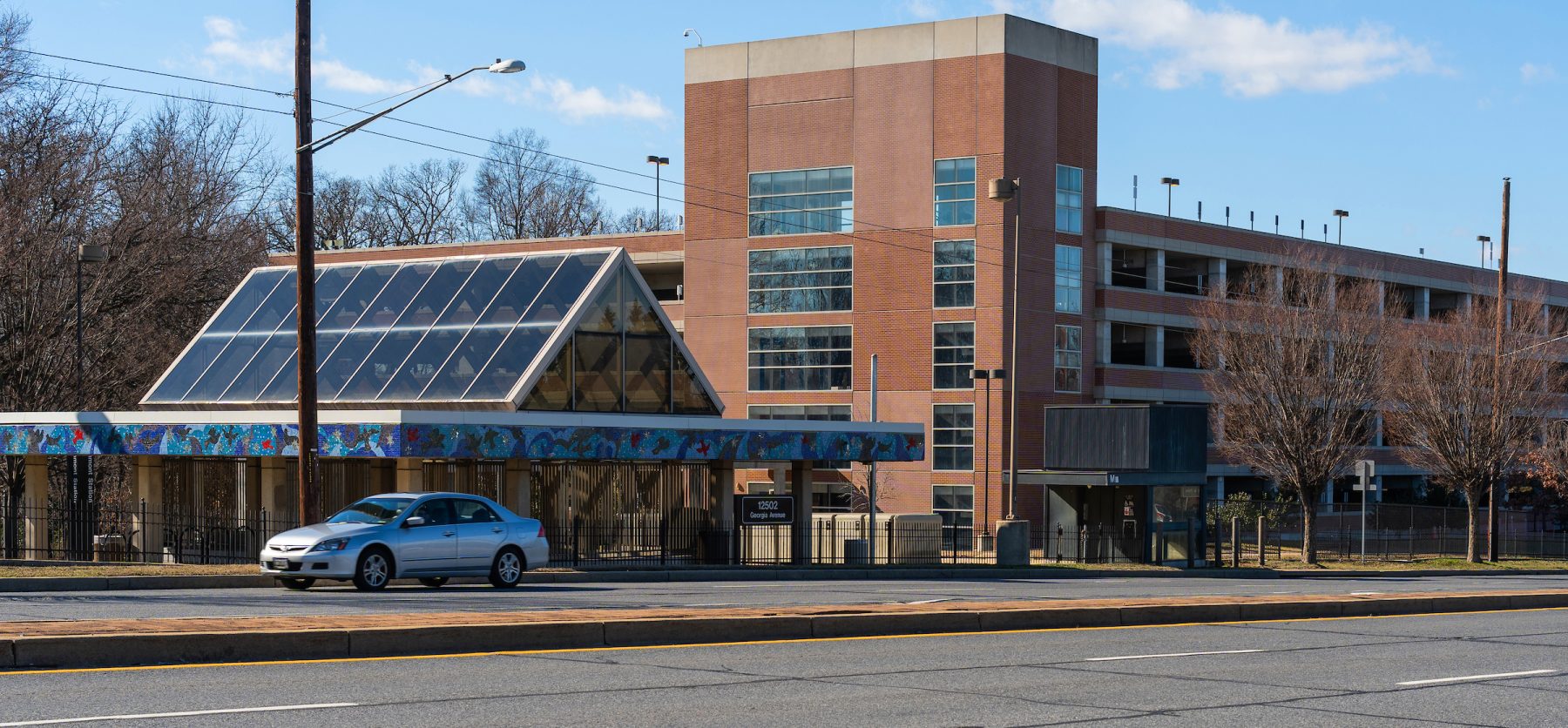
Study will identify short-term actions necessary to meet goals of Thrive Montgomery 2050 and evaluate the extent to which the goals of 2013 plan have been implemented
Wheaton, Md. – The Montgomery County Planning Department, part of The Maryland-National Park and Planning Commission, presented the scope of work for the Glenmont Corridors Opportunity Study to the Montgomery County Planning Board at its March 7 meeting. The purpose of the study is to identify actions necessary to support Thrive Montgomery 2050’s principles of corridor focused growth, complete communities, and 15-minute living in the study area. The study will also evaluate which recommendations from the 2013 Glenmont Sector Plan have been achieved, identify the barriers that are preventing recommendations from being implemented, and identify strategies to further Glenmont as the walkable, diverse, and sustainable community envisioned in the 2013 Plan.
View the scope of work. Watch the presentation on demand.
The Glenmont Corridors Opportunity Study looks at the community of Glenmont, specifically the parts of Glenmont that are within an approximate one mile walk from the Glenmont Metro Station. The community is at the juncture of two major growth corridors: Randolph Road and Georgia Avenue. Key focus areas will include assessing land use and zoning challenges, particularly the redevelopment potential of the Glenmont Shopping Center. It will also emphasize improving mobility by boosting Metro ridership, enhancing pedestrian and bike connections, and addressing safety concerns along the corridors.
Residents and interested parties are encouraged to sign up for the plan’s eletter to receive the latest news and information on the study.
Thrive Montgomery 2050 Concepts
One of the study’s goals will be to identify strategies to meet Thrive Montgomery 2050’s goals of complete communities and 15-minute living in the study area. Complete Communities have a range of land uses, housing types, infrastructure, services, and amenities to meet a wide range of needs for a variety of people—and to support racial and socioeconomic integration. The related concept of 15-minute living mixes housing, offices, and retail uses in each neighborhood or district so services, infrastructure, facilities, and amenities to serve the daily needs of people who live or work there are within walking, biking, or rolling distance, minimizing the need to own a car.
Corridor Focused Growth
Thrive Montgomery 2050 makes a new commitment to promoting growth along major transportation corridors, including Georgia Avenue and Randolph Road, for efficient land use in service of complete communities. Corridor focused growth aligns the intensity of development along the corridors with the urban, suburban, and rural context of the surrounding area and calibrated to account for existing or planned transit and other transportation infrastructure. Thrive recognizes that certain corridors possess the potential for growth and development throughout their entire length while others are more likely to experience such potential primarily at centers of activity or nodes along the corridor.
The Study Process
The study results will be shared with the community and the Planning Board but it’s important to note, that unlike a master plan, studies conducted by Montgomery Planning do not amend previously approved plans or recommend to change zoning. Montgomery Planning will begin the study with data collection, analysis, and policy-relevant research on the people who live and work in the area and information about the area itself—its homes and businesses, its growth patterns, and its economic and physical relationships to the county. Montgomery Planning will pair this research and analysis with outreach to develop a better understanding of the Glenmont community and define community supported solutions for local challenges to achieve the walkable, diverse, sustainable, and complete community envisioned in the 2013 Plan and Thrive Montgomery 2050.